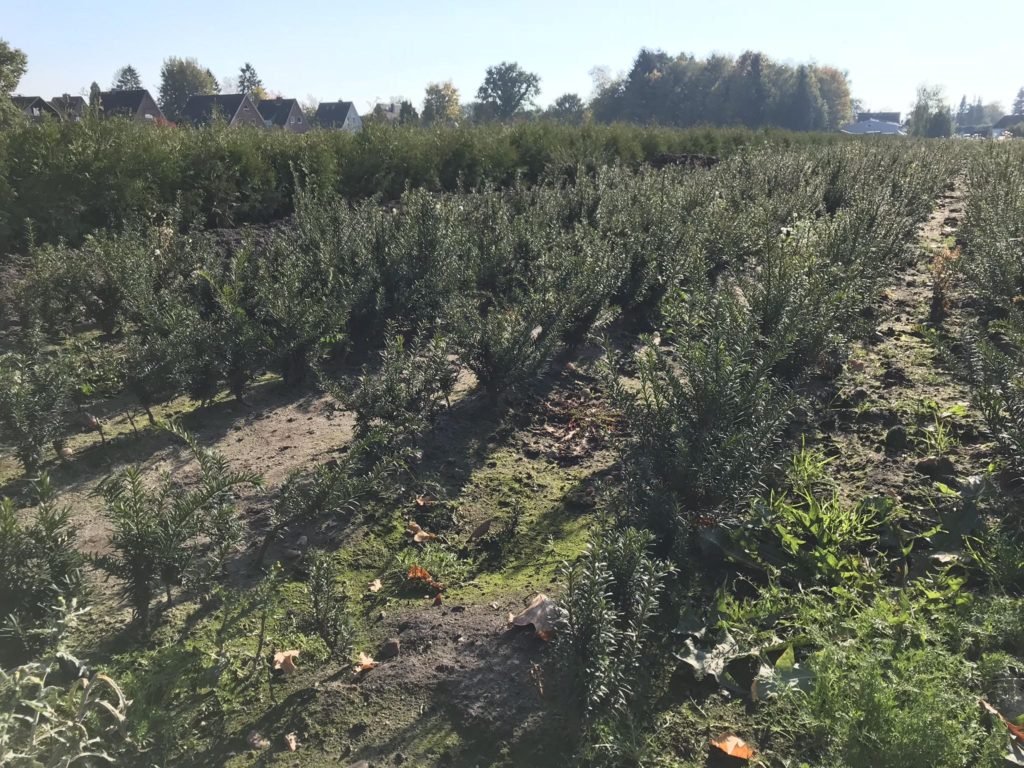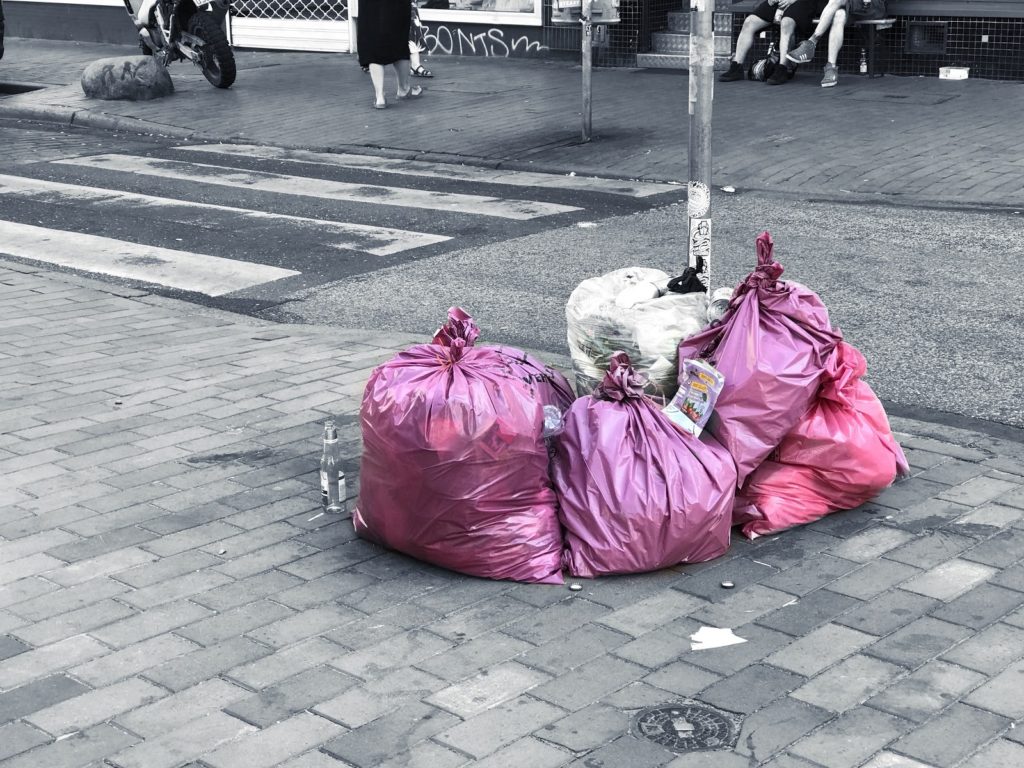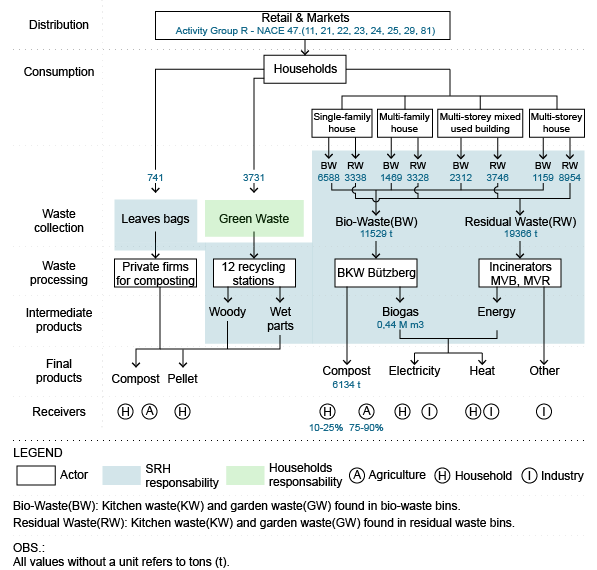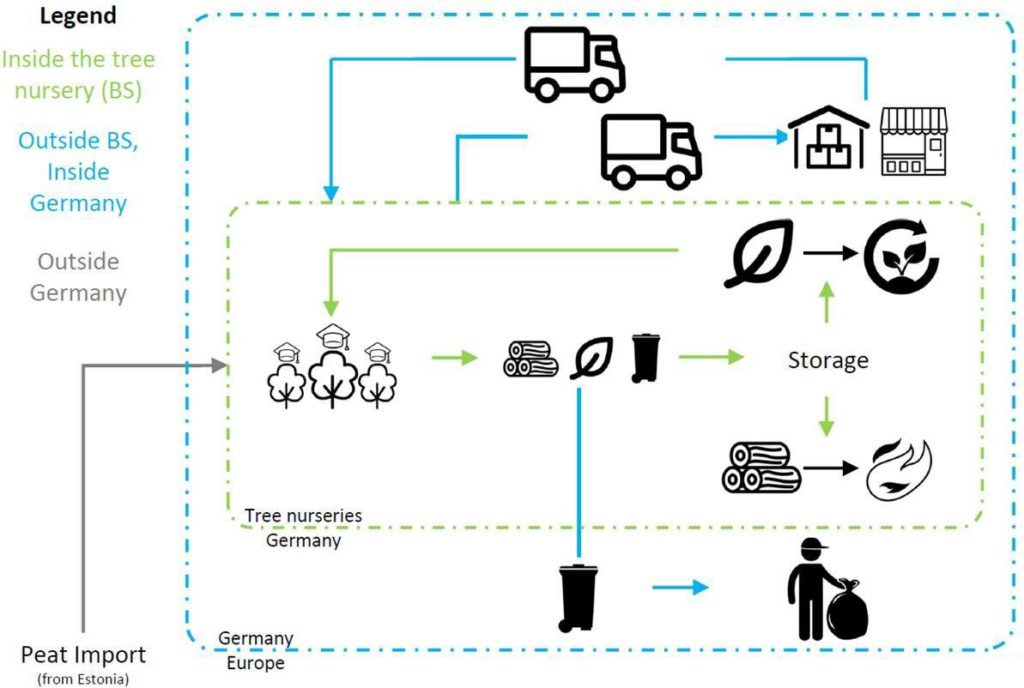Region and Focus Area
The Hamburg case study encompasses the region of Hamburg Metropolitan Area and it consists of two focus areas: the City District Hamburg-Altona, 77,4 km² large with 270,263 inhabitants (Statistikamt Nord, 2017); and the County of Pinneberg in Schleswig-Holstein, 664 km² large with 310,653 inhabitants (Statistisches Bundesamt, 2016).
Figure: The location of the Region and Focus Areas of the Hamburg case, together with the Sample Areas in Altona.
The Sample Areas, which is part of the functional unit for the environmental assessment within REPAiR, involve parts of the eight municipalities of the county of Pinneberg plus neighbourhoods of the Hamburger district of Altona, comprising a variety of:
1. Urban and peri-urban settlement types (e.g. urban cores, village centres, suburban detached houses, large housing estates, retail, logistic etc.);
2. Open spaces (e.g. agricultural land, natural preservation areas, etc.); and
3. A very special characteristic is the concentration of tree nurseries and horticultural farms (circa 500 enterprises)
Wastescapes
The wastescape map highlights different types of neglected, wasted and underused spaces. In the context of the Hamburg Region and the Focus Areas, the map shows for instance: land without use, abandoned productive site, noise pollution from the airport and a minor concentration of chemicals in the water in proximity to the port area. Thus, the most current empty spaces within the city already present an implementation plan for the near future. In a Circular Economy perspective, the temporary and the long-term use of each of these areas will be used as a base for discussion on solutions during the PULL meetings with the local stakeholders.
Figure: HFH18.3.Wastescape versus planned expansion areas (link) (HCU, 2018).
DISTRICT OF ALTONA
Key Material Flows & Problems
With the latest deliverable, the D3.6 Process Model Hamburg, a series of analyses about the district of Altona (i.e. spatial, socioeconomic and material flow analyses) were realized to access the Altona’s socioeconomic background to be related to the waste production and recycling behaviour of its different settlement typologies.
The main findings of this study include the following:
● In some densely built areas of Altona, waste is still collected in pink plastic bags (Sackabfuhr) as there is a lack of space to place bins/containers.
● In these areas, the separation of bio-waste and residual waste have not been done so far.
● In some areas where bio-waste bins are disposed, kitchen waste is still predominantly thrown into the residual waste bins.
● This is a wasted opportunity since the kitchen waste holds greater value for composting for nutrient recovery as well as for biogas production.
Figure: Simplified AS-MFA for the households OW in Altona with estimated values (HCU Team 2018).
Key Objectives
During Interviews and the PULL workshops the stakeholders in Hamburg defined the following key priorities to achieve a high-quality separated collection of bio-waste and recyclables:
● Encourage citizens to separate bio-waste correctly to reduce mixture with other waste types;
● Increase the amount of collected biowaste; and
● Encourage urban planners to address the waste topic since the early planning phases.
Possible Solutions
Initial ideas for improved waste cycles have been developed in cooperation with the major stakeholders in Hamburg, such as:
● Service hub: a quarter service centre distributed in modules that combines common neighbourhood services (e.g. DHL, food sharing and/or repair cafe) with local waste separation and collection practice to optimize the accessibility and logistics of the Sample Areas’ waste management.
● Educational projects: decentralised composting plants and urban gardens in KITAs and schools to incentivize the valorization of waste and nutrient recovery through young generations to influence the older ones.
● Rewarding Programs: for community engagement and good waste separation behaviour.
● Guideline for planners and architects: for better and holistically incorporate into planning the topic of waste management in existing buildings and new housing developments to close waste loops and transform the residents’ mindset.
COUNTY OF PINNEBERG
Key Material Flows & Problems
The main waste fraction produced by tree nurseries is biowaste. Tree nurseries are responsible for their bio-waste disposal and they have the right to do it on their area. The disposal and the treatment can be done in different ways: storage on the site, creation of compost, composting and production of gas, or incineration. The biggest part is stored or incinerated directly on site, which is rather problematic for sustainability and energy recovery, and it disturbs the neighbourhood with the burning activities.
Figure: Simplified AS-MFA for the tree nurseries in Pinneberg (HCU Team 2018).
Key Objectives
To avoid on-site incineration:
● Organize collection and treatment of green waste for the production of energy and compost, respectively for reuse of wooden material, to avoid on-site incineration.
● The organized collection and treatment should have a moderate price and be feasible from a logistic point of view for the tree nurseries.
● Produce a compost of high quality to mitigate plant illnesses risk when used in tree nurseries.
Possible Solutions
The tree nursery association: GAB (the waste management company in Pinneberg) and the County currently develop ideas for a new waste collection system. The biowaste from the tree nurseries could be brought to the existing bio-waste plant of GAB and processed to create biogas and compost.
For more detail see the project report section of this webpage.






